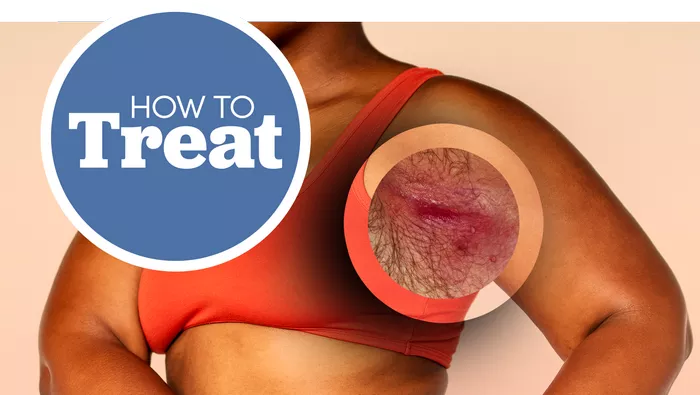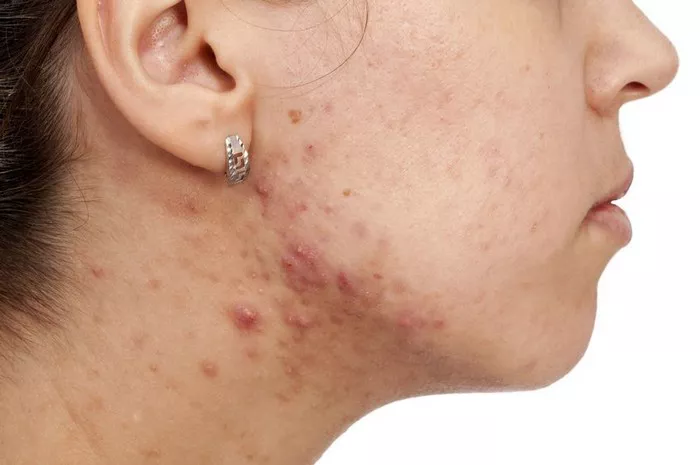Hidradenitis Suppurativa (HS), also known as acne inversa, is a chronic inflammatory skin condition that affects the apocrine sweat glands and hair follicles in areas with skin folds, such as the armpits, groin, buttocks, and under the breasts. Despite its prevalence and impact on patients’ quality of life, HS remains widely misunderstood and often misdiagnosed. In this comprehensive article, we delve into the intricacies of HS, exploring its etiology, clinical presentation, diagnostic challenges, treatment options, and the latest research advancements.
Understanding the Etiology and Pathogenesis of HS
The exact cause of HS remains elusive, but it is believed to involve a complex interplay of genetic predisposition, immune dysfunction, and environmental factors. Genetic studies have identified several susceptibility genes associated with HS, including those involved in the regulation of the immune response and skin barrier function. Dysfunction of the immune system, particularly the innate immune system, plays a pivotal role in the pathogenesis of HS, leading to chronic inflammation, follicular occlusion, and the formation of abscesses, sinus tracts, and scarring.
Clinical Presentation and Disease Severity
HS typically presents with recurrent, painful nodules, abscesses, and draining sinus tracts in the affected areas. These lesions can vary in size and severity, ranging from small, isolated nodules to extensive, interconnected networks of sinus tracts known as “tunnels.” The disease course is often characterized by periods of flare-ups and remissions, with symptoms worsening during periods of increased inflammation or hormonal changes.
The severity of HS is commonly assessed using validated scoring systems, such as the Hurley staging system, which categorizes the disease into three stages based on the extent of involvement and the presence of scarring. Early diagnosis and intervention are crucial in preventing disease progression and minimizing long-term sequelae.
Diagnostic Challenges and Differential Diagnosis
Diagnosing HS can be challenging due to its variable presentation and overlap with other dermatological conditions. The clinical diagnosis is primarily based on the characteristic appearance of the lesions and the distribution pattern in areas of skin friction and sweating. However, HS is often misdiagnosed as folliculitis, furunculosis, or pilonidal cysts, leading to delays in appropriate management.
In cases of diagnostic uncertainty, additional investigations such as ultrasound, magnetic resonance imaging (MRI), or histopathological examination of biopsy specimens may be necessary to confirm the diagnosis and rule out other conditions. Histopathological features of HS include follicular hyperkeratosis, perifollicular lymphocytic inflammation, and sinus tract formation.
Multimodal Treatment Approach
The management of HS is challenging and often requires a multimodal approach tailored to the individual patient’s needs and disease severity. While there is no cure for HS, various treatment modalities aim to alleviate symptoms, reduce inflammation, prevent complications, and improve quality of life.
1. Topical and Systemic Therapies:
Topical treatments such as antibiotics, retinoids, and anti-inflammatory agents may be used for mild-to-moderate disease or as adjunctive therapy to systemic treatments. Systemic therapies include antibiotics (e.g., tetracyclines, clindamycin), immunomodulators (e.g., corticosteroids, cyclosporine), and biologic agents targeting specific inflammatory pathways (e.g., tumor necrosis factor-alpha inhibitors, interleukin-12/23 inhibitors).
2. Surgical Interventions:
Surgical management may be indicated for refractory or severe cases of HS, particularly those associated with extensive scarring, abscess formation, or functional impairment. Surgical options range from local incision and drainage of abscesses to wide local excision of affected tissue, including the use of techniques such as carbon dioxide laser ablation or dermatotraction.
3. Lifestyle Modifications and Supportive Care:
Lifestyle modifications such as weight loss, smoking cessation, and avoiding tight clothing or shaving in affected areas can help reduce friction and irritation, thereby minimizing disease exacerbations. Additionally, supportive measures such as wound care, pain management, and psychological support are integral components of holistic HS management.
Emerging Therapies and Research Directions
Recent advancements in our understanding of the pathogenesis of HS have paved the way for the development of novel therapeutic targets and treatment strategies. Emerging therapies under investigation include Janus kinase (JAK) inhibitors, apocrine gland targeting agents, and microbiome-modulating therapies aimed at restoring dysbiotic microbial communities implicated in HS pathogenesis.
Furthermore, ongoing research efforts are focused on elucidating the role of genetic and environmental factors in HS susceptibility, refining diagnostic criteria and biomarkers, and exploring the potential of personalized medicine approaches tailored to individual patient profiles.
Conclusion
Hidradenitis Suppurativa is a chronic inflammatory skin disease characterized by painful nodules, abscesses, and sinus tracts in intertriginous areas. Despite its significant impact on patients’ physical and emotional well-being, HS remains underrecognized and undertreated. A multidisciplinary approach encompassing medical, surgical, and supportive interventions is essential for optimizing patient outcomes and improving quality of life. Continued research into the underlying pathogenesis of HS and the development of targeted therapies hold promise for advancing our understanding and management of this complex dermatological condition.

























